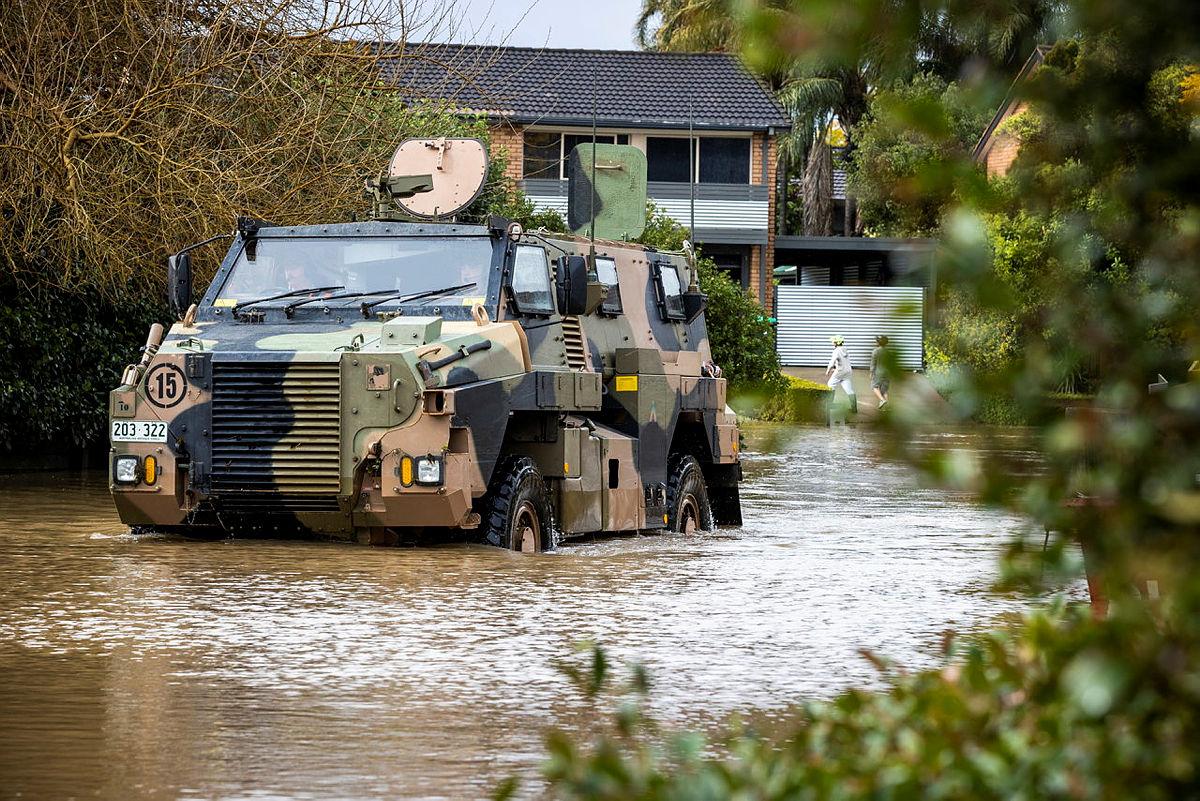Fragile local communities are a security risk
Posted By Gill Savage on July 28, 2022 @ 06:00

Northern Australia is critical to Australia’s security and its position in the region. The complexities of our strategic environment require us to think more broadly and creatively about the role the north plays as the conduit for our regional engagement.
We know that Australia needs to operate ‘in and through’ the north to make a greater contribution to the region and to also draw our regional partners into Australia. Indeed, northern Australia has enduring and strong cultural, educational and health links into the Asia–Pacific that go beyond security.
There’s increasing appreciation that the success of our regional engagement depends on Australia’s north being prosperous, resilient and secure. This means that, for the north to play the role it should, its physical and social infrastructure needs to be robust.
Discussions about defence capability usually take us down the track of what’s needed to support and sustain air, sea and land power. However, there’s a little-discussed dependency that is crucial to the success of our military—and that’s the communities within which the defence organisation is located and operates. The smaller and more remote the community, the greater the dependency between that community and the Australian Defence Force. Bases need a support workforce in communities in which there may be limited other employment. Defence members need access to off-base recreational facilities. Local businesses rely on Defence to stay financially viable.
When all is going well, a kind of symbiosis develops. However, a small change to policy or base management, or an extreme weather event, for example, can have disproportionate impacts on local economies. But those impacts are not just on the local government areas, or LGAs, within which Defence is based, they’re also on neighbouring LGAs that Defence traverses during its operations.
Disturbingly, a quick review of the annual reports of local councils in northern Australia highlights that many LGAs in the north are struggling and some are financially unsustainable. This point was reinforced in some detail in a 2021 audit [1] of Queensland LGAs, which found that 60% of the sector is at moderate or high risk of being financially unsustainable.
LGAs in Australia report their financial performance in terms of the extent to which revenues raised cover operational expenses only or are available for capital funding or other purposes. This is the operating surplus ratio, and LGAs seek to have a OSR [2] of between 0 and 10%.
But the fragility of local councils is a national problem and not confined to the north. A review of non-capital-city LGAs where Defence is based shows that OSRs for the 2021 financial year vary between 11.9% [3] for Mid-Western Regional Council in the central west of New South Wales and −12.6% [4] for Wyndham City Council west of Melbourne. Other results worth mentioning are Wagga Wagga City Council (NSW), −7.3% [5]; Toowoomba Regional Council (Queensland), –1.4% [6]; Cairns Regional Council (Queensland), −1.4% [6]; the City of Rockingham (WA), −0.8% [7]; and Liverpool City Council (NSW), −5.0% [8].
While Covid-19 has had and continues to have a marked downward impact on OSR results, in many cases the downward trend started before the pandemic.
The significance of this is that local infrastructure, needed by Defence and others to operate effectively, has declined or is at risk of decline because LGAs don’t have sufficient revenue to construct, operate and maintain it.
Financial constraints mean that LGAs are increasingly resorting to loans and grants to fund maintenance of local infrastructure such as roads and bridges. Often the unintended consequence of funding shortfalls is that investment in social infrastructure is last on the priority list.
Concern about the financial viability of LGAs isn’t confined to northern Australia, but financial viability does have a disproportionate impact in the isolated and thinly populated areas prevalent in Australia’s north. In many ways, policymakers have neglected northern Australia and accepted that there are limitations to operating in that diverse and vast environment. But Defence is one of many users dependent on the infrastructure there, so it’s important to position this issue as a whole-of-nation one.
Other nations, including the US, Japan and Singapore, are investing heavily in Australia. However, they naturally prioritise investment that meets their needs rather than the foundation and supporting infrastructure for which three levels of government in Australia have responsibility. The issue here is sovereignty. There’s a risk that the current model positions Australia as a location for the US, Singapore or other nations rather than as a player of equal standing.
And other nations are rejecting the prevailing mindset, including within the Australian military, that it’s not possible to operate at certain times of the year in Australia’s north. We see this mindset in action with roads that are cut by floodwaters year after year but keep being repaired to the same standard so they continue to be at risk of flooding. The interconnections between national security, defence, resilience and the market play out more starkly in the north than elsewhere in Australia.
The challenge for the new minister for northern Australia is to ensure alignment of whole-of-nation outcomes and investment in the north. This is not about spending more money; it’s about embracing modern nation-building through cross-jurisdictional and cross-sectoral collaboration that achieves more effective multi-use—and multi-user—outcomes.
This contemporary approach to nation-building rejects ‘can’t’ and instead focuses on ‘how’.
Article printed from The Strategist: https://aspistrategist.ru
URL to article: /fragile-local-communities-are-a-security-risk/
URLs in this post:
[1] 2021 audit: https://www.qao.qld.gov.au/reports-resources/reports-parliament/local-government-2021
[2] OSR: https://www.moretonbay.qld.gov.au/files/assets/public/services/budget/budget-2021-22/budget-2021-22-financial-sustainability.pdf
[3] 11.9%: https://www.midwestern.nsw.gov.au/files/assets/public/council/plans-and-strategies/financial-statements/2020-21-financial-statements-mwrc.pdf
[4] −12.6%: https://www.wyndham.vic.gov.au/sites/default/files/2021-10/AnnualReport_2020_21%20final%20with%20approved%20financials%20SIGNED.pdf
[5] −7.3%: https://wagga.nsw.gov.au/__data/assets/pdf_file/0008/188918/Annual-Financial-Statements-2020-21-Wagga-Wagga-City-Council.pdf
[6] –1.4%: https://www.qao.qld.gov.au/2020-local-government-dashboard
[7] −0.8%: https://rockingham.wa.gov.au/forms-and-publications/your-city/about-us/annual-reports-and-registers/annual-report-2020-2021
[8] −5.0%: https://www.liverpool.nsw.gov.au/__data/assets/pdf_file/0009/208188/Annual_Financial_Statements-2021-6.pdf
Click here to print.